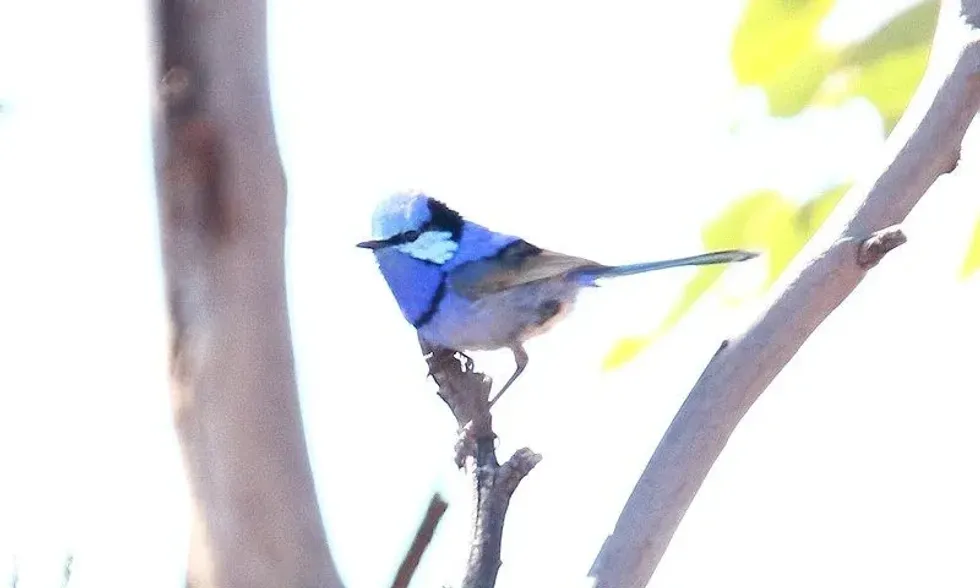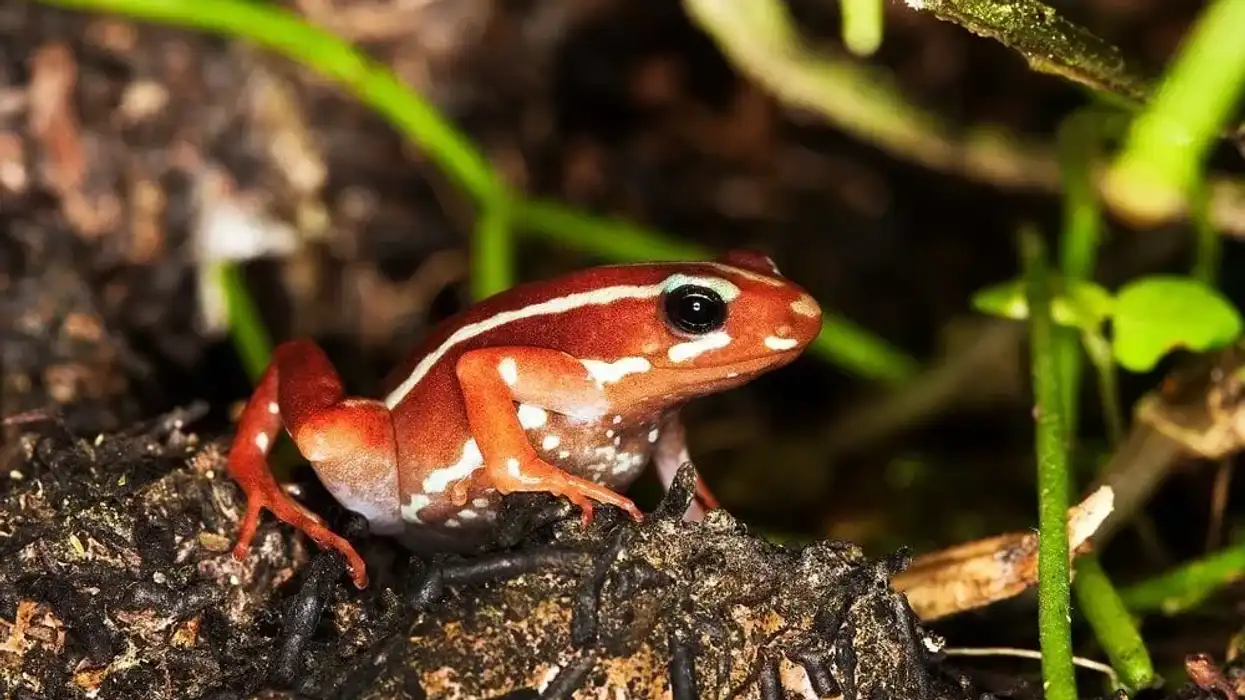Planning to go on a trip to Down Under and spend your summer vacation there? If you are indeed, then you must be prepared to see the beautiful fairywren birds that inhabit the lands of Australia and New Guinea.
These brightly-colored birds are a sight for tired eyes. Belonging to the genus Malurus, there are around 12 species of fairywrens.
The most common and well-known are the splendid fairywren and the superb fairywren. Due to their beautiful blue plumage, splendid fairywrens are also simply known as blue wrens.
Interestingly, none of the species of the fairywren have any actual relations with the true wrens. What is even more interesting is that these birds are widely distributed over the landscape of Australia from wetlands and wooded areas to dry arid and semi-arid regions.
So, keep on reading to learn and know more about these beautiful little birds. For more info on other birds, take a look at the house wren and robin too.
Fairywren Interesting Facts
What type of animal is a fairywren?
Fairy-wren (Malurus genus) are a group of 12 birds commonly known as fairy-wrens. The splendid fairywren (Malurus splendens), superb fairywren (Malurus cyaneus), purple-crowned fairy-wren (Malurus coronatus), and red-winged fairywren (Malurus elegans) are some of the more well-known birds of this genus.
Other species like Wallace's fairywren and Campbell's fairywren were once thought to be part of this group. Interestingly, fairywrens are not related to wrens.
What class of animal does a fairywren belong to?
Being a species of birds, fairy-wrens belong to the class of Aves and the family Maluridae.
How many fairywrens are there in the world?
The total number of fairywrens present cannot be calculated as these birds are widely distributed all over the Australasian continent including parts of New Guinea, Eastern, and Western Australia. The birds also don't seem to be too much in threat of declining these days.
However, the loss of habitat has led to the death of many fairywrens around the continent.
Where does fairywren live?
Fairy-wrens are generally found in a wide variety of living ranges. They can be found in wet marshes, wetlands, and dense forest covers with low shrubs along both arid and semi-arid regions in Australasia.
The splendid fairywren is found in the regions of Central and Western Australia, while the superb fairywren is found along with the areas of Southern and Eastern Australia, ranging up to areas like Tasmania. A population of them has also been observed in the lowlands of New Guinea.
On the contrary, the red-winged fairy-wren is endemic to the southwestern corner of Western Australia. Other species of this genus including the purple-crowned fairy-wren are found throughout different parts of the continent.
What is a fairywren's habitat?
The bright blue splendid fairy-wren (also known as the blue wren) has a habitat of arid regions. It can be found amidst trees and shrubs such as mallee and mulga.
The blue wren or the splendid fairywren can also be found in certain forested areas of the southwest part of Australia. The superb fairy-wren, which also has a bright blue forehead, inhabits areas that are wet and receive rainfall.
They mostly live in woodland areas that have lots of undergrowth. Interestingly, unlike the blue splendid fairy-wren, the superb fairy-wren has easily adapted to living in areas that have been urbanized. The red-winged fairy-wren is found in swampy lands.
They live in the undergrowth of trees such as the karri and the jarrah. Red-winged fairy-wren birds also prefer riverside sword sedges.
However, like the splendid fairy-wren, the red-winged fairy-wren does not live in urban spaces. Other species are found in forests, marshes, and drylands of Northern, Eastern, and Central Australia.
Who do fairywrens live with?
Fairy-wrens are highly social birds. The blue splendid fairy-wren and the others live in social groups of males and females within their home range.
The groups range from three to five birds (can reach nine) with one or two dominant males along with females. However, interestingly there have been cases where many breeding males with their breeding plumage have been observed within a group.
It is unclear how these males coexist and whether their coexistence is dependent upon hierarchy. Being active spring and summer birds, they forage together to get food during these seasons.
How long does fairywren live?
The blue splendid fairy-wren and the superb fairy-wren have an average lifespan that ranges between five to six years. However, amongst all the fairywrens, the red-winged fairywren has the highest seasonal rate of survival. These birds can live up to 10 years and amazingly, the oldest red-winged fairy-wren was thought to have lived till the age of 16 years.
How do they reproduce?
The reproduction and the breeding season of the fairywrens bring out some unique behaviors. The breeding male is characterized by the breeding plumage that can be a variety of colors including blue and purple.
This plumage is how different species are recognized. The breeding season for most fairy-wrens including the blue splendid fairy-wren occurs between spring and late summer.
For the red-winged fairy-wren, this breeding season occurs between the short span of October and December. The nests are built in areas with dense vegetation and on trees. The breeding male engages in several courtship rituals, including the sea-horse dance.
Once the mating is complete, a clutch of two to four eggs is laid by the blue wren and other fairywrens. These eggs hatch after 14-15 days.
Interestingly, a female may get impregnated by a breeding male from another social group. You must note that while the male and female can bond for life, they can easily have multiple mating partners, i.e.
they are promiscuous. Both these outsider males and the group males help the females in raising the young birds.
These young birds become sexually mature at the age of one year, during which time they stay with their parents as helpers in the social group. After that, all blue wrens and other fairy-wren species fly off to join other groups or start their social group.
What is their conservation status?
Due to their abundance in the continent of Australasia, all species of fairy-wren have been categorized as ‘Least Concern’ by the International Union For Conservation Of Nature or the IUCN in their conservation Red List. However, populations have been subject to decline due to loss of habitat and forest fires.
Fairywren Fun Facts
What do fairywrens look like?
There are a few distinct features of the fairywrens. The first feature to identify them is their narrow tail.
The tail is almost on average around 2.5-3.5 in (6.4-8.9 cm) long. Now, while juveniles, non-breeding males, and females have gray-brown non-breeding plumage (females have some coloration on tails), the case is different for breeding males. These males have bright colors including blue, purple, red, and silver.
The coloration can be seen on the head, neck, and tail along with the ear coverts and wing plumage. The plumage of the male red-winged fairywren is made of black, silvery-blue, brown, and red wings.
The blue tail is most common in the splendid fairywren. Along with the blue tail, they have bright blue coloration all over their body and their plumage. The superb fairywren, on the other hand, has a crown plumage of bright blue and iridescent blue in combination with gray and brown plumage.
They also have a bright blue tail. Other species in this genus have other combinations of colors in the plumage of breeding males.

How cute are they?
These small-sized birds with their bright colors can be quite cute to look at. The splendid fairywren with its blue appearance can be strikingly beautiful to look at.
How do they communicate?
Vocalizations make up the main crux of the communication within the fairywrens. All the birds sing a certain call of one to four seconds to communicate within themselves. Males have a strange song-like vocalization which is presumed to be alert calls.
On the flip side, females who are incubating can be heard giving off a 'purr' sound. Alarm calls for the birds also include 'chit' sounds. These modes of communication are uniform throughout the genus
How big is fairywren?
Fairywrens are small-sized birds. The average length of the birds across the genus is more or less uniform. The length of the fairywren range from 5.5-6 in (14-15.2 cm). The tail of the bird varies between 2.5-3.5 in (6.4-8.9 cm). In comparison with the splendid fairywren, the red-tailed black cockatoo is almost four times bigger.
How fast can fairywren fly?
Although these birds move around swiftly, the exact speed of the fairywren hasn't been estimated.
How much does a fairywren weigh?
Different species of fairywren weigh differently. The splendid fairywren range between 0.28-0.31 oz (7.9-8.8 cm) while the superb fairywren weighs 0.28-0.46 oz (7.9-13 g). The red-winged fairywren weighs 0.28-0.39 oz (7.9-11.1 g). The other birds of this genus also have the same weight range.
What are the male and female names of the species?
Males and females do not have any specific names. They are simply called male and female splendid fairywren, or male and female superb fairywren, or male and female red-winged fairywren.
What would you call a baby fairywren?
While there are no distinct names for the baby fairywren, you can call them fledglings and nestlings. Sexually immature birds are called juveniles.
What do they eat?
These birds are mostly insectivores in nature. They feed on spiders, ants, and other insects. However, they are also seen using seeds, fruits, and flowers as a source of food.
Nest predators of these birds can include the laughing kookaburra, crows, ravens, magpies, and some introduced mammals too.
Are they dangerous?
No, of course not. These small birds are not dangerous at all.
Would they make a good pet?
These birds are best suited to the wild. While they have been kept in captivity in some places, they are not at all adapted to life as a pet. On top of that, it is extremely difficult to domesticate wild birds.
Did you know...
During the period of courtship, males are known to give yellow petals to the females as a way of courting them.
Superb fairywrens showed the unique ability to respond to sounds made by humans when they adapted and became aware of the miner alarm calls near the Australian capital of Canberra.
Different Types Of FairywrenS
There are around 12 different types of fairywren in the Malurus genus.
They are the splendid fairywren (Malurus splendens), the superb fairywren (Malurus cyaneus), the red-winged fairywren (Malurus elegans), the white-winged fairywren (Malurus leucopterus), the red-backed fairywren (Malurus melanocephalus), the white-shouldered fairywren (Malurus alboscapulatus), the purple-crowned fairywren (Malurus coronatus), the blue-breasted fairywren (Malurus pulcherrimus), the variegated fairywren (Malurus lamberti), the purple-backed fairywren (Malurus assimilis), the lovely fairywren (Malurus amabilis), and the empire fairywren (Malurus cyanocephalus).
All these birds are found in the continent of Australasia.
Symbolism Of Fairywrens
According to many, fairywrens can be an excellent symbol for raising the young through the care and support of near and dear ones.
Here at Kidadl, we have carefully created lots of interesting family-friendly animal facts for everyone to discover! Learn more about some other birds from our myna facts and blue tit facts pages.
You can even occupy yourself at home by coloring in one of our free printable fairywren coloring pages.










